Over 50 Fruits from which to choose
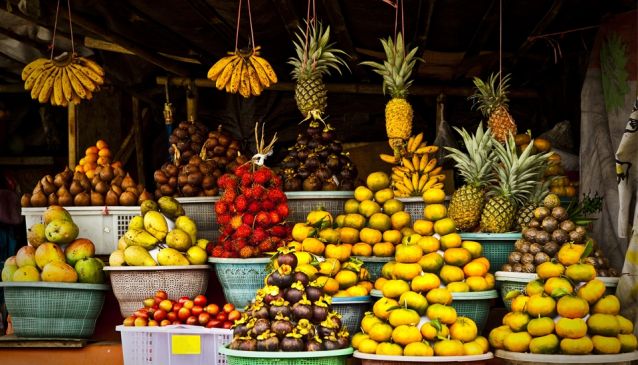
All fruit should be washed, but by “safe to eat” we mean that almost no fruit in Bali is sprayed with noxious chemicals, nor is it genetically modified. Bali has such a variety of "wild" fruit that you should take advantage of the situation while here. It literally almost “falls off the trees” and as a result you will be amazed how cheap most fruit is.
If you see deciduous fruit, it is usually imported, and most imported fruit is picked when still green, so lacks that “sun-ripened” flavor. In Bali, most fruit is sold the day it is picked, not stored, unless exported.
Dragon Fruit:
A typical fruit in abundance right now is Dragon Fruit (hylocereus), said to originate in Mexico but now “native” to many Asian countries. Its Asian names include the Malay buah naga and pitahaya. The name 'pitahaya' or 'pitaya' is derived from Spanish.
The fruits have red or white meat with tiny black, edible pips and are great anti-oxidants. Delicious in a smoothy.
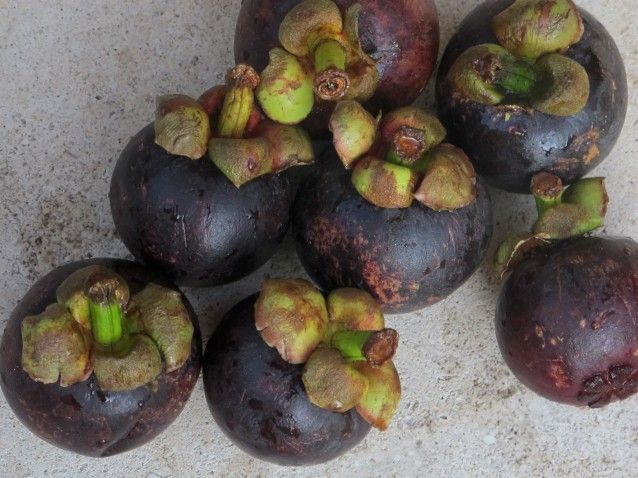
Mangosteens, not related to mangoe
Mangosteen:
Also abundant right now is the Mangosteen (manggis) packed with essential nutrients that are needed for growth, development and overall well-being. Research has shown that this purple-skinned fruit with white segments is loaded with a class of naturally occurring polyphenol compounds known as xanthones, which have anti-inflammatory properties.
Xanthones in mangosteen actually heal the cells damaged by free radicals. The little fruit contains catechins – antioxidants that are five times more effective against free radicals than vitamin C. Then this amazing fruit also has quinones (potent anti-bacterials).
Mangosteen is loaded with B vitamins – like niacin, folate, riboflavin and thiamin. The skin or shell can be brewed into a tea which contains the above properties. The tea powder can be bought in Bali supermarkets.
Durian:
Very popular with locals right now is the infamous Durian. The name is derived from duri (thorn) and suffix an which means thorny fruit. Widely known as the King of Fruits, durian is a Bali native fruit and available from now to August. Ripe durian always spread a strong odour that can be recognized from 1 kilometer away. Many hotels ban the fruit from their premises.
There are many durian jokes in Bali, but we recently had a laugh for another reason. As we rode along Jalan Sunset in South Bali, our driver pointed out a durian hanging from the back bumper of a car; like the henpecked driver was told “You find some other way of bringing that thing home than in this car.”
The odour on passing a stall of them is enough to be off-putting. They are reputed to be very good to eat, like camembert or brie cheese! I am not partial to them either.
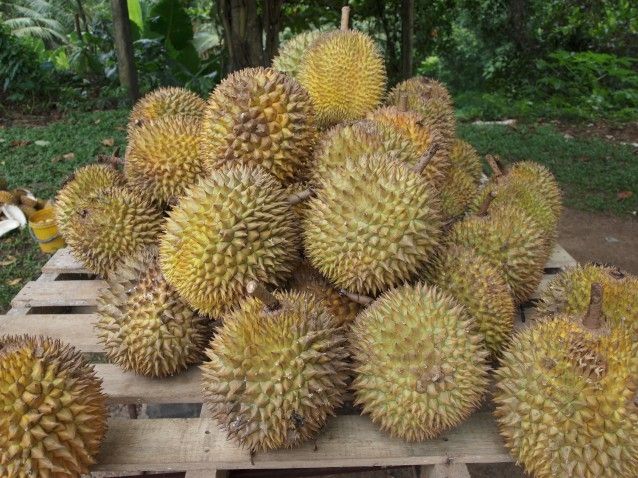
Lovely smelly durians
Coconut:
Feeling thirsty in the middle of the day? Nothing better than a young Coconut, deftly opened by a Balinese expert. We had breakfast with our sons in a local warung once and ordered a coconut with 2 straws. It came with the opening in the shape of a heart. How did they know? Almost 30 years together and still drinking from the same…..coconut. Ask for a spoon and dig out the white flesh; quite enjoyable and very healthy!
Jackfruit: the big sweet tasting fruit, is found everywhere on the island. There is even a Jackfruit in the garden area of a Lebanese restaurant in Legian, with real fruit in season. Jackfruits resemble durian, in the shape of a rugby ball but without the spikes of the durian or the smell of a well-used jackboot. They also grow to the size of a very large rugby ball. People use the jackfruit as additional ingredient in local desserts like Es Buah (fruits in ice with coconut milk and sugar), Es Campur (assorted jelly, fruits and young coconut meat with coconut milk, cream and sugar with ices).
The unripe jackfruit is also use in traditional cuisine, like gulai nangka (jackfruit curry) and for lawar (chopped jackfruit, grated coconut, chopped meat and bones and spicy seasonings). Warning: Do not take jackfruit pieces in your fingers; you will spend ages removing the sticky goo. Dishwashing liquid and hot water 3 times on my last venture before I discovered knives and forks work.
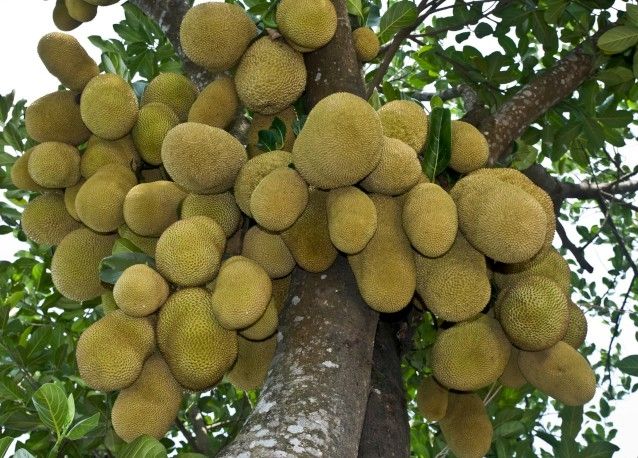
A lovely cluster of Jackfruit - photo wikipedia
Rambutan:
If you like lichees, you will like Rambutan (hairy lichees). They come in bunches, growing on brittle stalks. Use a sharp knife to make an incision half way round the thick skin, squeeze open and enjoy the little sweet ball, not forgetting that the pip should be discarded after chewing off the meaty fruit. By the way, there is a pip in one of the segments of a mangosteen.
Guava: known as Jambu Batu or Jambu biji, is a pear shaped fruit green to yellow with white or red meat. Full of Vitamin A and C and easily found anywhere on the island in season. The leaves are used locally for herbal medicine, especially to cure diarrhea and diabetes. Guavas leaving a pervading pleasant smell.
Bananas:
Now before you say: “I wonder why he left out the Banana,” here goes. It is a very popular and important fruit in Bali. Bananas sell in clusters (or hands) with green to yellow skin and white to yellow flesh. Sometimes green-looking bananas are ripe, and yellow-skinned bananas are unripe. You get to know after living a while in Bali.
At least 42 different varieties have been named, but research indicates that there could be well over 300 varieties of bananas across the archipelago of Indonesia available right through the year.
Bananas can be fried (piesang goreng) and served with honey. Variations are sold at many food stalls at traditional markets. Balinese also use the stem of the plant for a meal. The food is named ares or jukut ares; the young stem is finely chopped then spicy seasoning and some chicken or pork added to form a delicious and nourishing dish.
More fruit to come at a later date. The list is too long for one meal.
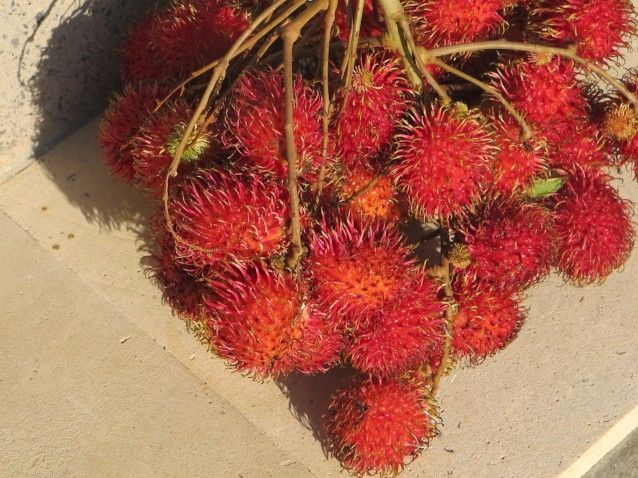
Bunch of rambutans